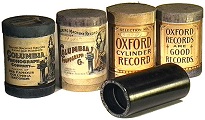‘Every passion borders on the chaotic but the collector’s passion borders on the chaos of memories.’ –Walter Benjamin, ‘Unpacking my Library’, in Harry Zohn transl. Illuminations, edited with an Introduction by Hannah Arendt. (New York: Schocken Books, 1969), p.60. My first encounter with Arnold Bake’s Bengal recordings was at the British Library in 2004. It […]
I move through many lands, I move from land to land. In the course of this work I have realized that home and homeland are as illusory as the moner manush, the one whom the heart desires and for whom the search never ends.
Savitri Govind, who later became the famous Rabindrasangit singer Savitri Krishnan, was 18 when Arnold Bake recorded her in Santiniketan in 1931.
The reasons for calling this sub-chapter Sadhushongo (in the company of the sadhu or the wise one) are many. Firstly, it takes off from a letter Bake wrote to his old teacher and friend, the wise Kshitimohan Sen, in 1955. Kshitimohan had inspired a love for baulgan in Arnold Bake, a musical practice where ‘shadhushongo’ is way of teaching and learning the song. Secondly, I went with the letter to meet my own old and wise teacher, Kshitimohan’s grandson Shibaditya Sen, and he gave me some recordings of Khoda Baksh Sai and others.
During this trip to Mainadal in Birbhum, West Bengal, following sounds recorded by Arnold Bake in 1933 and Deben Bhattacharya in 1954, seeds of a relationship of sharing and trust were planted, which have borne fruit over these past eight or so years, leading to the digging into family archives by the Mitra Thakurs.
I have shared the POW recordings with sound recordist Ali Ahsan of Kushtia, who carries in him a long history of listening to such songs, and the songs of the bauls and fakirs too. There used to be puthi readings in his home in his childhood, his grandfather would teach him to listen. Hence the old archival recordings, though buried under surface noise, revealed meanings to him which I would not be able to understand on my own.
Arnold Bake had recorded the fakirs in Naogaon on 28 February 1932. Mostly all men, some described as ‘ganja workmen’, and one woman who sang the maximum number of songs for him. I felt drawn to her. I had also seen photographs from Naogaon in Leiden.
‘Every passion borders on the chaotic but the collector’s passion borders on the chaos of memories,’ wrote Walter Benjamin in ‘Unpacking My Library’.
They were all insiders to the sound of Arnold Bake’s recordings from the Dumka Hills, yet they were all different too. The listening sessions in Kairabani, Harinsingha, Jamuasol and at Johar and NELC in Dumka in Dumka town, revealed a range of reception and interpretation of the sounds held in Bake’s Santal cylinders.
After 2017, I met several people, native speakers of Santali or scholars, with whom I listened not only to Bake’s recordings but also to The Travelling Archive’s recordings from Dumka. They had an insider-outsider perspective on the recordings.

